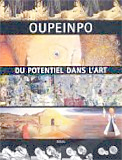
The workshop of potential painting (Oupeinpo) was created in 1980. It provides a space to work, not in the ends of completing works, but rather to make tools and, more precisely, methods, perspectives, manipulations… structures, or Oupeinpian constraints, that could become “tools for tools” within the artist’s field. Thus understood, constraint is not a restriction but the necessary condition of a potential field: predetermining the number of colors allowed, for example, opens the potential field of color-measured works, just as the pencil stretches graphite works to an unlimited register.
The Oupeinpo has discerned two practical families of constraint: means-based rules, or procedural constraints, and ends-based rules, or formal constraints. Accordingly, procedural constraints apply to the manipulation of prepared knives and brushes, and formal constraint apply to the final appearance, regardless of the means used, of a painting, for example, with four separate scenes, each obtained by a 90° rotation (see Jacques Carelman’s “La Rose des têtes”).
In order to prove and validate its constraints, the Oupeinpo elaborates non-works. It fashions nothing other than possible perspectives needed for demonstrations, which it considers feasibility experiments. Whether or not the group’s members—all working artists—actually manage to reap the benefits in their own work, Oupienpian experimentation shares the same operative distance one might find between the conditions in the 1960 laboratories where lasers were developed and today’s networks of optical fibers: it’s the same distance that definitively separates the registers of inquiry and that of knowledge.
By vocation, the Oupeinpo does not limit itself to the contents of pein (painting). Its domain is that of formal structures in which the registers of both questioning and uncertainty, like a subversive formalism, remain actively formative. Like Albert Einstein, we conceive of imaginary experiments in order to push the boundaries of the equations (of constraints) to their limits, to their breaking point.
Torturing the limits, pushing the boundaries by way of Oupeinpian constraint, not in hopes of locating some chimeric escape, but rather to apprehend and motivate phenomenal wrinkles, empty spaces, to infuse outgrowths, to inspire excursions into new frontiers, and to play, to whistle tricky tunes in which supplementary dimensions of this universe may interfere.
Seizing control of these infinite additional dimensions, the Oupeinpo thereby opens the gates of epiphany to new subjects.